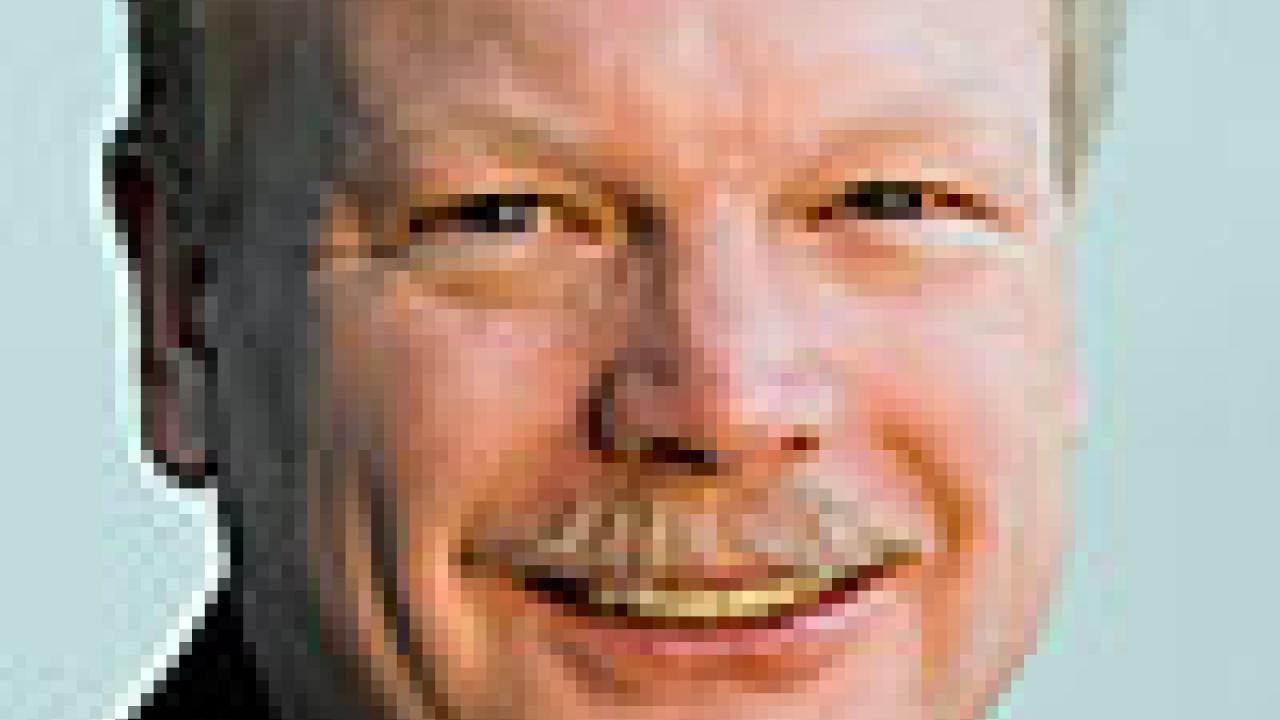Bruce R. White, a professor of mechanical and aeronautical engineering and the interim vice provost for academic personnel at UC Davis, will become dean of the College of Engineering for a three-year appointment that begins Jan. 1, 2009.
White will fill the role while the college's current dean, Enrique Lavernia, serves as the campus's provost and executive vice chancellor.
"Bruce White brings a commitment to the college and a wealth of relevant experience to the deanship," Chancellor Larry Vanderhoef said. "I appreciate his willingness to step in, and I have every confidence he will serve the college and the broader campus very well during his term as dean."
A faculty member of the college since 1975, White is a nationally recognized authority in the fields of wind energy engineering and the physics of air flow over surfaces. He has played key roles in various high-profile research projects ranging from the sands of Mars, to the dry lakebed of Owens Lake in eastern California, to the playing field of AT&T Park in San Francisco.
In 1975, White earned his Ph.D. in aerospace engineering at Iowa State University in Ames. In 1999, he was offered the endowed chair of that university's aerospace engineering department but turned it down in favor of remaining at UC Davis, where he has held a number of administrative positions within the college and campuswide, including serving as the college's associate dean for academic personnel and planning from 2002 to 2007.
The appointment, White said, will provide him the opportunity to "give back the knowledge and experience that the college and university have given to me while allowing me to help support the excellent faculty and outstanding staff we have in the college, as they truly are the most precious resources we have."
U.S. News and World Report ranks the college among the top 20 engineering programs in publicly funded universities in the country. White will oversee more than 200 faculty members, some 3,000 undergraduate and 1,100 graduate students. He takes the reins of the college at a time when it is experiencing a growth in funding for research.
"As dean, I look forward to providing leadership for the college to continue the outstanding trajectory that Enrique Lavernia has established to obtain the next level of excellence," White said. "And I note that the college is well on its way from having research expenditures of $76.7 million this past year to its newly awarded contracts and grants of approximately $98.4 million. This is truly remarkable given the current climate for funding."
White said that one of his goals as dean will be to increase the college's intellectual diversity and achievements. But in the short term, he said, he will have to deal with the state's financial difficulties.
"I need to ensure that academic programs continue to maintain their integrity and continue to deliver the outstanding instruction to undergraduate and graduate students that we are routinely noted for," he stated. "This will certainly be a challenging goal in the next couple of years."
A pioneer in wind-tunnel research, many of White's notable achievements are based on research he conducts in three wind tunnels that he and his students have designed and built on campus.
In 1995, for example, he led a project that resulted in a major redesign of the proposed home of the San Francisco Giants baseball team. His recommendation that the new stadium be pivoted 180 degrees prevented a major fiasco by protecting fans and players from the strong winds that had plagued the Giants' former stadium, Candlestick Park.
By using his wind tunnels to simulate the surface of Mars, White has helped NASA engineers design hardware that can withstand corrosive wind-blown dust and sand on that planet. Closer to home, his research has helped planners understand the processes that create wind-blown dust pollution on the 110-square-mile Owens Lake, which dried up decades ago when its water was diverted for municipal use. One of his findings there provided the optimal seeding density for erosion-controlling grasses, potentially saving millions of dollars in seed.
In 2002, along with UC Davis engineering professor Case van Dam, White founded the Wind Energy Institute, now called the California Wind Energy Collaborative. This consortium brings together UC Davis engineers, wind energy companies, utilities, state and federal government officials and environmentalists to build expertise in wind energy and support development of the wind energy generating capacity in the state.
White is the author of some 100 papers, review articles and book chapters and is a reviewer for seven professional journals. He has been an invited lecturer in Korea, China and Israel, and in 1988, he received the Magnar Ronning Award for Teaching Excellence, bestowed by the Associated Students of UC Davis.
White's total annual compensation as dean will be $244,500.
About UC Davis
For 100 years, UC Davis has engaged in teaching, research and public service that matter to California and transform the world. Located close to the state capital, UC Davis has 31,000 students, an annual research budget that exceeds $500 million, a comprehensive health system and 13 specialized research centers. The university offers interdisciplinary graduate study and more than 100 undergraduate majors in four colleges -- Agricultural and Environmental Sciences, Biological Sciences, Engineering, and Letters and Science -- and advanced degrees from five professional schools: Education, Law, Management, Medicine, and Veterinary Medicine. The UC Davis School of Medicine and UC Davis Medical Center are located on the Sacramento campus near downtown.
Media Resources
Liese Greensfelder, Research news (emphasis: biological and physical sciences, and engineering), (530) 752-6101, lgreensfelder@ucdavis.edu
